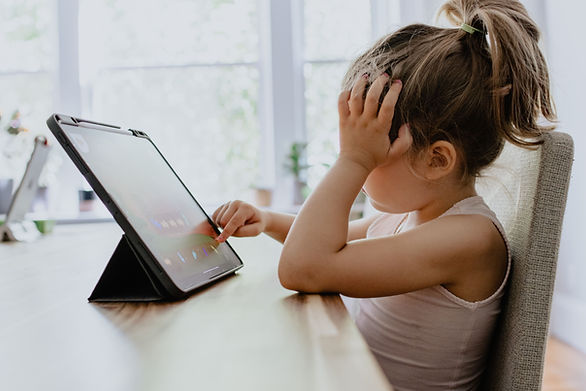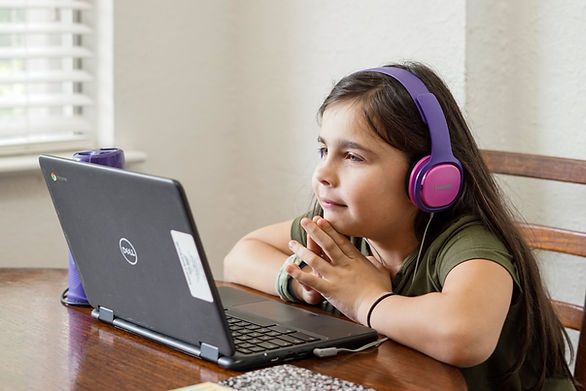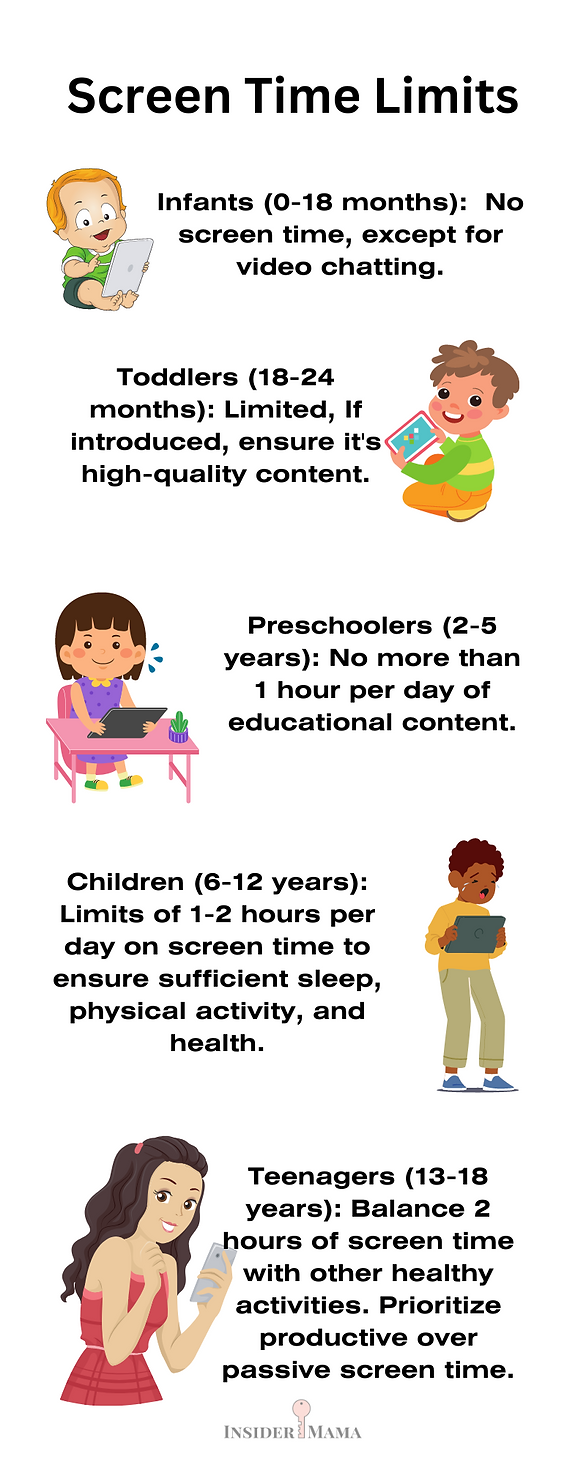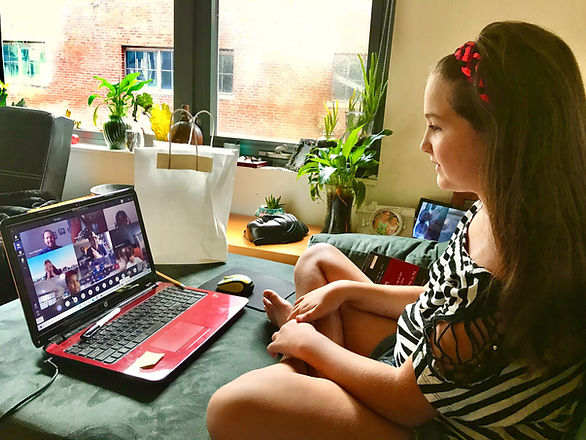In today’s world, kids are growing up with screens all around them. Let’s chat about screen time and find good ways to balance the good stuff and the possible downsides of technology in our children’s lives.

This site contains affiliate links; please view the disclosure for more information.
Screen time means the time kids spend using electronic stuff like TVs, phones, tablets, computers, and video games. There’s a lot of wrong ideas about this, so let’s set the record straight:
Different Kinds of Screen Time: We need to tell the difference between just watching stuff and actually doing stuff on screens. Just watching, like TV shows, is one kind, and using things like learning apps or creative stuff is another.
It’s About What They’re Doing, Not Just How Long: We shouldn’t just count the minutes they’re on screens. It’s more about what they’re doing. Screen time isn’t always bad. It can help with learning, being creative, and talking to others if we choose the right stuff.

The Pros and Cons of Screen Time
While excessive screen time can have negative effects, let’s not forget that it also offers unique advantages. Here, we explore the benefits and potential drawbacks of screen time for our little ones:
Benefits of Screen Time
Educational Opportunities: Carefully selected apps, websites, and programs can provide valuable educational content, fostering cognitive skills, creativity, and problem-solving abilities.
Enhancing Digital Literacy: In today’s technology-driven world, children must acquire digital skills early on, preparing them for future academic and professional endeavors.
Social Connections: Online platforms allow children to connect with peers, both locally and globally, fostering social interactions and cultural awareness.
Drawbacks of Screen Time
Sedentary Lifestyle: Children need to engage in physical activities regularly as it plays a vital role in their overall health. However, excessive screen time can hinder their physical activity, leading to adverse effects.
Sleep Disruptions: Blue light emitted by screens can interfere with our little ones’ sleep patterns, affecting their quality of rest.
Developmental Challenges: Research suggests that excessive screen time in early childhood may impact cognitive development, attention span, and language acquisition.

Establishing Healthy Screen Time Limits
Now that we have a better understanding of the pros and cons of screen time, let’s explore some practical strategies to establish healthy boundaries:
Age-Appropriate Guidelines: Different age groups have distinct needs and vulnerabilities when it comes to screen time. Consider reputable sources like the American Academy of Pediatrics (AAP) guidelines to determine appropriate limits for your child’s age.
Creating a Family Media Plan: Collaborate with your family to develop a media plan that outlines specific rules and expectations around screen time. Encourage open dialogue and flexibility while setting consistent limits.
Engaging Alternatives: Encourage a healthy balance by offering a range of non-digital activities, such as outdoor play, creative projects, reading, and family bonding time. This diversification helps foster well-rounded development.
Nurturing Mindful Tech Habits
Teaching our children to engage with technology mindfully is vital in this digital age. Here are some tips to foster mindful tech habits:
Leading by Example: Be a positive role model by demonstrating healthy tech habits yourself. Limit your own screen time and prioritize face-to-face interactions with your children.
Co-Viewing and Co-Creating: Engage in screen time activities together, such as watching educational videos or playing interactive games. This allows you to monitor content, encourage critical thinking, and also strengthen your bond.
Screen-Free Zones and Times: Designate certain areas of your home and specific times during the day as screen-free zones. This promotes quality family time, encourages conversation, and ensures a balanced lifestyle.
In our fast-paced digital world, finding quality family time can be a challenge. That’s where the Chonic Unplug Box comes in. If you find yourself constantly interrupted during family dinners, game nights, or study sessions by the never-ending buzz of phones and digital distractions, it’s time to consider this solution. The Unplug Box is designed to help families reconnect by providing a designated space to temporarily store phones and digital devices.
If you want to do more than just put your devices away, the OthoKing Bamboo Charging Station becomes the perfect companion for keeping your devices charged and organized. Bid farewell to cable clutter and limited sockets as this one-stop charger provides a neat solution for your charging needs.
Monitoring and Supervision
Stay proactive with these monitoring and supervision strategies:
Parental Controls: Utilize parental control features provided by devices and apps to regulate access, set time limits, and filter age-appropriate content.
Regular Check-Ins: Maintain open lines of communication with your children about their digital experiences. Encourage them to share their online activities. Be sure to ask questions, and address any concerns they may have.
Cybersecurity Awareness: Teach your children about online safety, including the importance of protecting personal information, avoiding cyberbullying, and identifying potential risks.


How Much “Screen Time” per Age Group Is Recommended
Determining recommended screen time limits for each age group can help promote healthy habits. While guidelines may vary slightly, here’s a general overview based on recommendations from reputable sources like the American Academy of Pediatrics (AAP):
Infants (0-18 months):
Avoid screen time, except for video chatting with family or loved ones.
Toddlers (18-24 months):
Introduce high-quality, educational programming with caregiver interaction, limited to a maximum of 30 minutes per day.
Preschoolers (2-5 years):
Limit screen time to 1 hour per day of high-quality, educational content. Co-viewing with caregivers is encouraged to enhance engagement and learning.
School-Age Children (6-12 years):
Setting clear boundaries for your kids’ screen time is vital. Make sure their time spent on gadgets doesn’t cut into their sleep, exercise, or other important parts of their day. Aim for a healthy balance between screens for schoolwork and just for fun. It’s a good idea to mix in different activities too, like playing outside, diving into books, enjoying hobbies, or hanging out with friends. A good rule of thumb is to keep fun screen time to about 1-2 hours a day.
Adolescents (13-18 years):
Encourage responsible screen time usage by setting limits and promoting self-regulation.
Discuss and establish guidelines as a family, taking into consideration homework, extracurricular activities, and other responsibilities. Stress the necessity of balancing online, physical, sleep, and in-person activities. While specific guidelines may vary, a general recommendation is to limit recreational screen time to around 2 hours per day.
It’s important to note that these recommendations serve as general guidelines, and individual circumstances, developmental needs, and personal preferences should also be considered. Adjust screen time limits based on your child’s well-being and the quality of their screen time experiences. Open communication and ongoing monitoring play a significant role in fostering healthy tech habits.

Screen Time and Impact on Vision and Eyesight
As parents, we naturally prioritize our children’s health and well-being, including their vision and eyesight. Concerns about the impact of screen time on vision have become increasingly prevalent in today’s digital age. While excessive screen time may have some effects on eye health, it’s important to understand the factors involved and take proactive measures to protect our children’s eyes. Here’s some information to consider:
Blue Light Exposure
Blue light is emitted by electronic devices and may contribute to eye strain and discomfort. Prolonged exposure to blue light, especially before bedtime, can disrupt sleep patterns. However, the amount of blue light emitted by screens is generally much lower than that received from natural sunlight.
Do you ever worry about the impact of “screen time” on your child’s eyes? As moms, we want to ensure that our little ones can enjoy their digital activities without any negative effects on their vision. That’s where ANDWOOD Kids Blue Light Glasses come in. These specially designed glasses are crafted to protect your child’s vision by blocking harmful blue light.
Eye Strain and Dryness
Staring at screens for extended periods may lead to eye fatigue, dryness, and discomfort.
This can be attributed to factors such as reduced blinking, improper screen viewing distances, and poor ergonomics.
Pre-existing Eye Conditions:
- Screen time may be more taxing on the eyes of children who already have refractive defects such as nearsightedness or farsightedness.
- It’s essential to monitor and address any existing eye conditions promptly, ensuring appropriate corrective measures are taken.
- To mitigate the potential impact of screen time on vision and promote healthy eye habits:
Encourage the 20-20-20 rule:
- Every 20 minutes, have your child look away from the screen and focus on an object approximately 20 feet away for about 20 seconds.
- This practice helps reduce eye strain and encourages regular breaks.
Maintain proper screen distance and positioning
Ensure that screens are positioned at a comfortable distance from the eyes, usually about 18-24 inches.
The top of the screen should be at or slightly below eye level to promote better posture and reduce strain.
Optimize lighting conditions
Dim or excessively bright lighting can also contribute to eye strain. Ensure that the room where screens are used has appropriate lighting, avoiding harsh glare or excessive darkness.
Promote a balance of activities
Encourage your child to engage in a variety of activities beyond screens, such as outdoor play, reading, and hobbies that don’t involve prolonged near vision.
Schedule regular eye exams
Routine eye examinations by an optometrist or ophthalmologist can help identify any potential vision issues and address them promptly.
Encouraging breaks, optimizing viewing conditions, and promoting overall eye health can go a long way in mitigating potential risks and supporting your child’s well-being.
Final Thoughts on Screen Time
Screen time isn’t all good or bad. It’s all about how we use it. For our kids, the key is finding the right balance. This means picking the right kind of screen activities that help them learn and grow, and setting limits to keep things in check. If we do this, screens can be a helpful part of our kids’ lives, without taking over. Remember, it’s not just about how long they’re on screens, but what they’re doing with that time that really counts.



